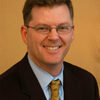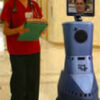Pandemic Preparation
Now that more swine flu cases have been reported in New York City than in any other part of the U.S., local hospitalists are preparing to handle a potential influx of ill patients.
Dahlia Rizk, DO, FHM, director of the hospitalist program at Beth Israel Medical Center (BIMC) in New York City, says her 20-member team is receiving daily briefings from the hospital’s infection control expert. Hospitalists are learning about the latest confirmed cases and guidelines from the Centers for Disease Control and Prevention (CDC), the World Health Organization (WHO), and the NYC Department of Health and Mental Hygiene. Dr. Rizk is sharing the information with the rest of the hospital staff.
“This is our home; this is where we spend 90% of our day, if not 100%,” Dr. Rizk says. “The staff know us, they rely on us, recognize us, and expect information and help from us when it comes to these kinds of situations.”
John Novotny, MD, associate director of the hospitalist program at BIMC, says the hospital’s strategy focuses on containing the virus and protecting other patients and staff from becoming infected by placing suspected swine flu patients in an isolation room that prevents the illness from being transmitted through droplets in the air. In addition, staff members will be expected to wear an N95 respirator facemask when entering the rooms of swine flu patients. Patients who are placed in the isolation room will be administered a PCR nasal swab test to confirm whether they are infected with influenza.
Dr. Rizk says patients showing mild to moderate symptoms will be asked to go home and remain there for seven days to reduce the chances of infecting others. “During this emergency, it is especially important to limit admissions of suspected influenza to those patients with more serious clinical conditions or significant comorbidities,” she explains. “We need to focus on the priority of avoiding exposing other vulnerable inpatients to influenza, such as the elderly, the immune-compromised, or those with chronic heart and lung conditions.”
Drs. Novotny and Rizk suggest hospitalists follow these swine flu preparation tips:
- Communicate. Keep nurses and other staff up to date about the latest treatment and containment guidelines.
- Establish expectations. Be aware that staffers are looking to hospitalists for guidance during this emergency situation.
- Monitor for updates. Stay informed through your infectious disease division, the CDC, the WHO, and your local public health department.
For more information, visit the CDC website.

